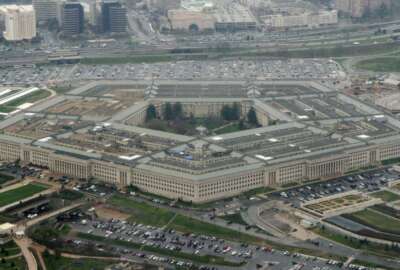
Military setting record COVID cases as nationwide numbers balloon
Despite the high number of cases, about 61% of military bases have eased travel restrictions.
The United States is on a tear, consistently breaking records of new coronavirus cases almost daily and the military isn’t far behind.
New numbers reported by the Defense Department show that nearly 2,000 service member coronavirus cases were diagnosed between Monday morning and Wednesday morning.
That leaves about 25,000 service members, reservists currently active with the deadly virus.
A total of 69,390 service members have contracted the disease since the beginning of the pandemic. Nearly 800 have been hospitalized.
The news comes nearly a week after the 10th service member died from COVID-19. Army Reservist Sgt. 1st Class Calvin Ogletree served in the Army for 27 years.
Within the United States more than 250,000 have died from the virus so far.
DoD hit another morbid milestone as well. The total number of cases between service members, their dependents, DoD civilians and contractors passed 100,000 on Wednesday.
Now 102,666 DoD-related people have contracted the virus.
Despite the increase in numbers, the Pentagon has still managed to continue lifting restrictions on traveling to and from military bases.
Currently, 61% of military bases do not have travel restrictions. However, some bases have had to pogo back and forth between sanctions as pockets of coronavirus pop up.
Under the current set of policies, DoD says movement between bases is phased, data-driven and based on each location’s condition.
Before an individual base can move from “red” to “green,” it needs to:
- Show a 14-day declining trend in symptoms and cases and be in a state that does not currently not have a stay at home order.
- Have already moved to Health Protection Condition “Bravo” or better — meaning the base is not experiencing sustained community transmission and has enough health care capacity to handle a spike in cases.
- Get approval from a military department secretary or combatant commander to lift travel restrictions, once the other conditions are met.
“Decision-making is very much tied to what is happening in their local community,” Thomas McCaffery, assistant secretary of defense for health affairs said this summer. “The Military Health System tracks COVID-19 cases and gets reports on a daily basis, and that information is shared with the commanders on the ground to make well-informed decisions about what to do.”
The military is reporting that the effects of the virus are not impacting readiness too greatly. The Army is continuing training with other countries.
On a larger scale, the Army Center for Initial Military Training (USACIMT) has about 46,000 soldiers training across Army Training and Doctrine Command.
“There’s less than 3% of those trainees who have tested positive for COVID-19,” USACIMT leader Maj. Gen. Lonnie Hibbard said recently. “We do multiple screenings prior to them arriving at our one of our four army training centers. Then, once those trainees arrive at those training centers, we do 100% COVID testing on all new recruits before they start training.”
The Army is suffering from most cases of coronavirus with 25,281. It is also the largest branch of the military.
Since the beginning of the pandemic, military officials stated they were not very concerned about readiness because the demographic is mostly young, fit individuals.
A recent study from the New England Journal of Medicine affirmed that position through a study on the COVID-19 outbreak on the aircraft carrier USS Roosevelt.
Despite 1,271 crewmembers testing positive, only 1.7% received hospital care.
“Although cases of serious illness occur in younger persons, they are less frequent and typically less severe than those in older persons,” the authors wrote. “In the case of the USS Theodore Roosevelt, few crewmembers were hospitalized. Certain coexisting conditions, such as hypertension, obesity, and diabetes, are associated with higher mortality. In our findings, we noted a number of coexisting conditions among hospitalized crewmembers, including uncomplicated, mild, and medically managed asthma, lung disease (e.g., bronchitis), hypertension, and liver disease-related conditions.”
The nation-wide COVID hospitalization rate is currently at 0.2%, according to the Centers for Disease Control.
Copyright © 2024 Federal News Network. All rights reserved. This website is not intended for users located within the European Economic Area.
Scott Maucione is a defense reporter for Federal News Network and reports on human capital, workforce and the Defense Department at-large.
Follow @smaucioneWFED







